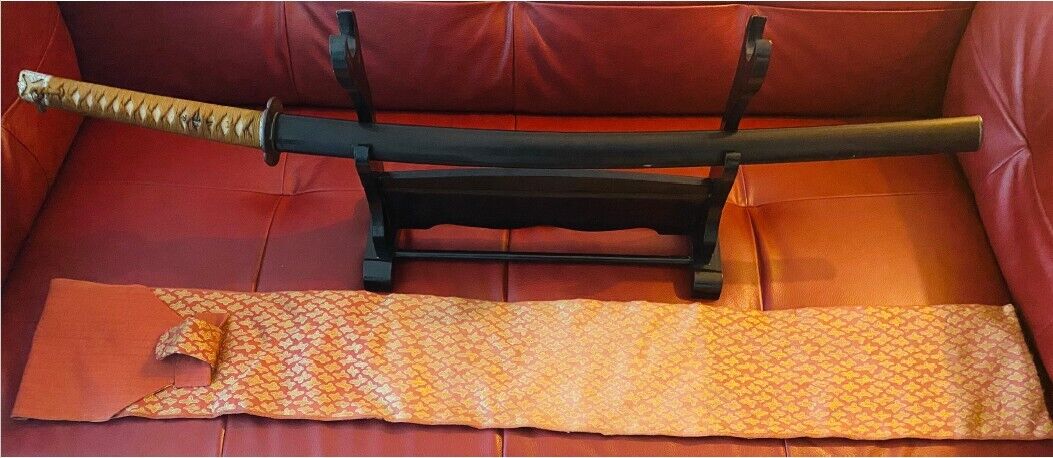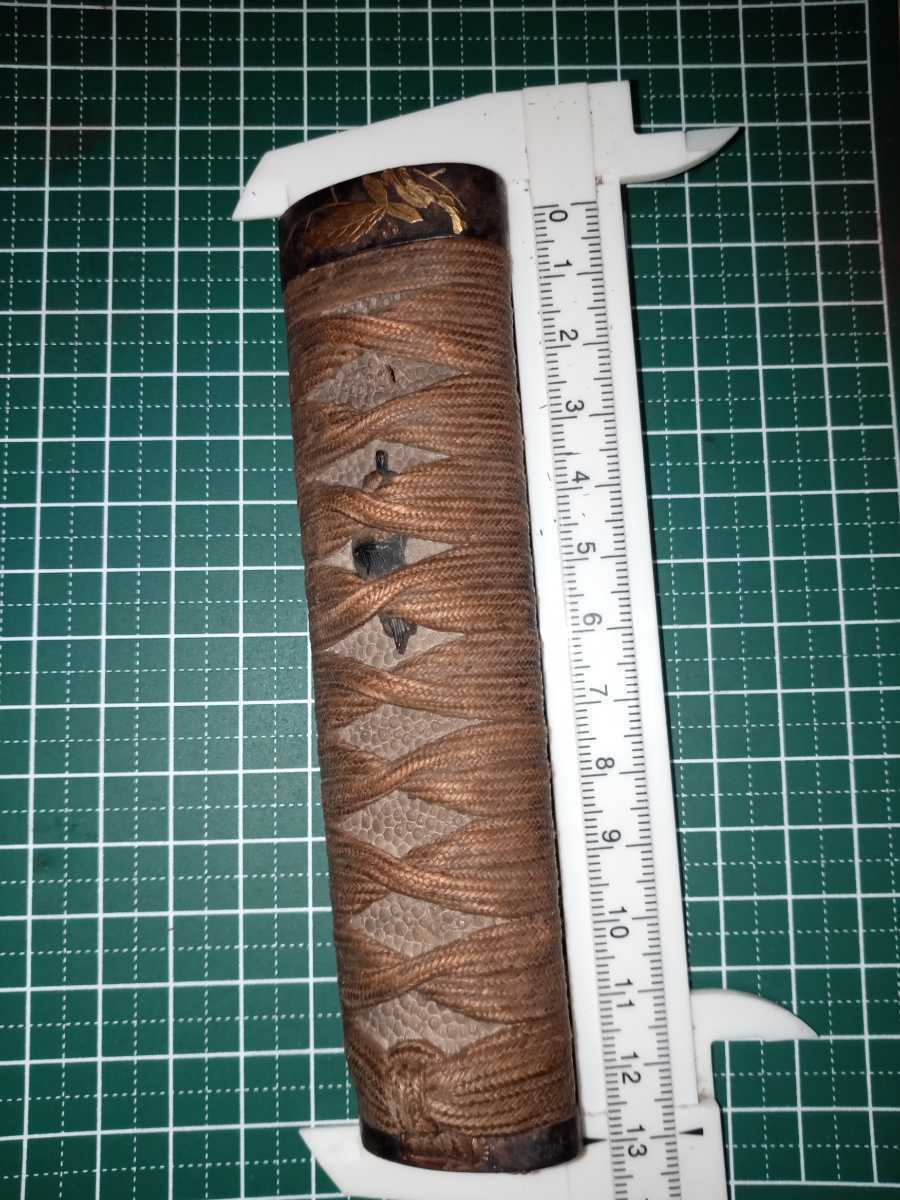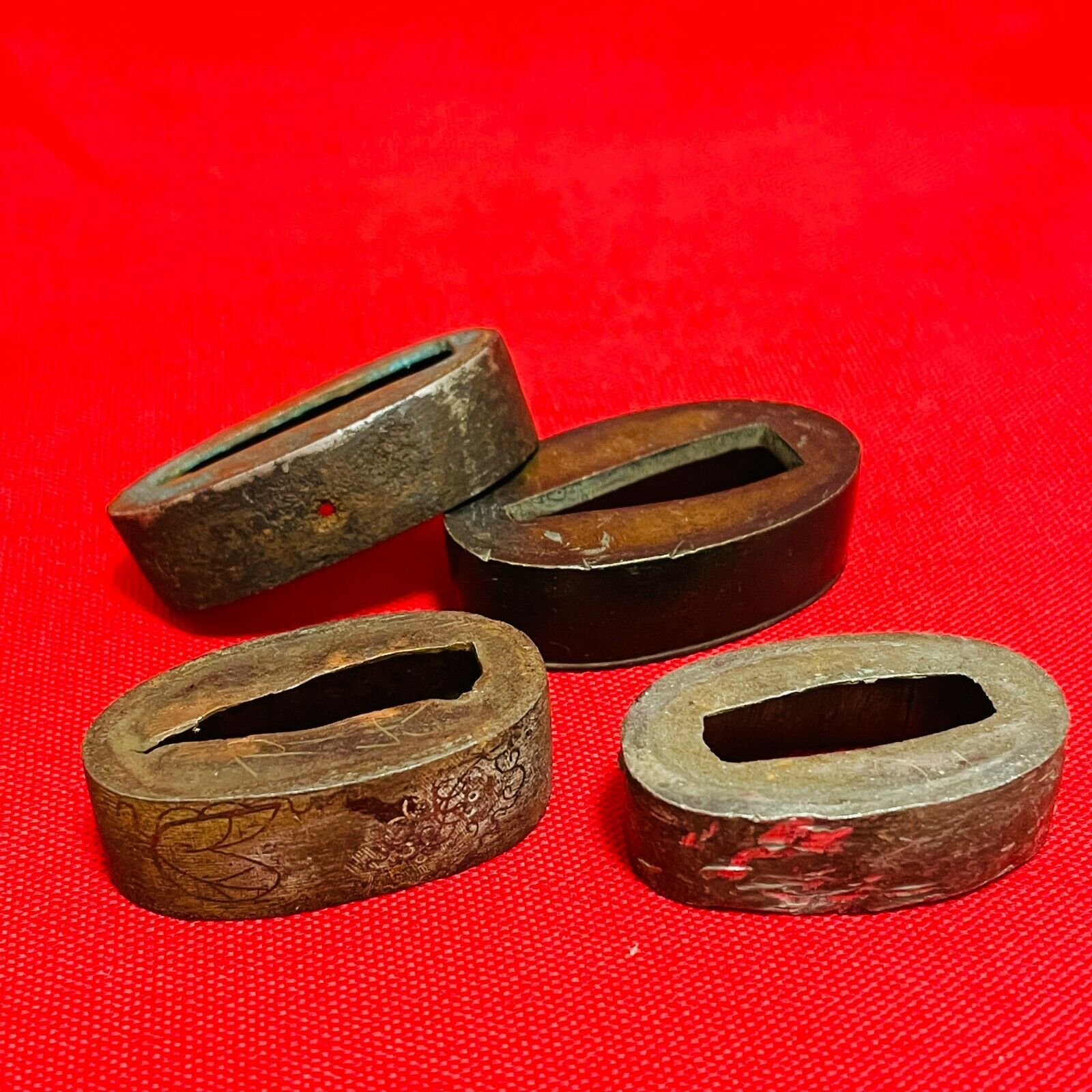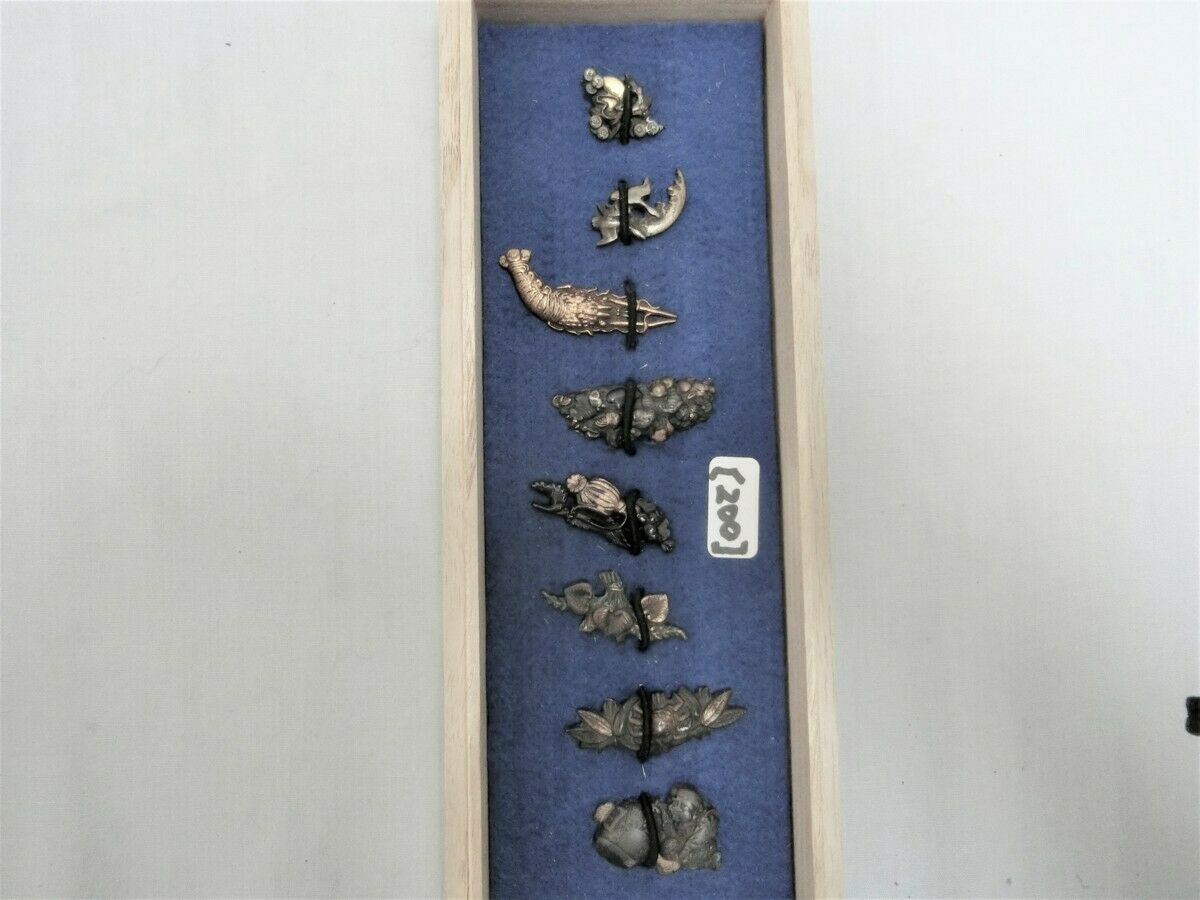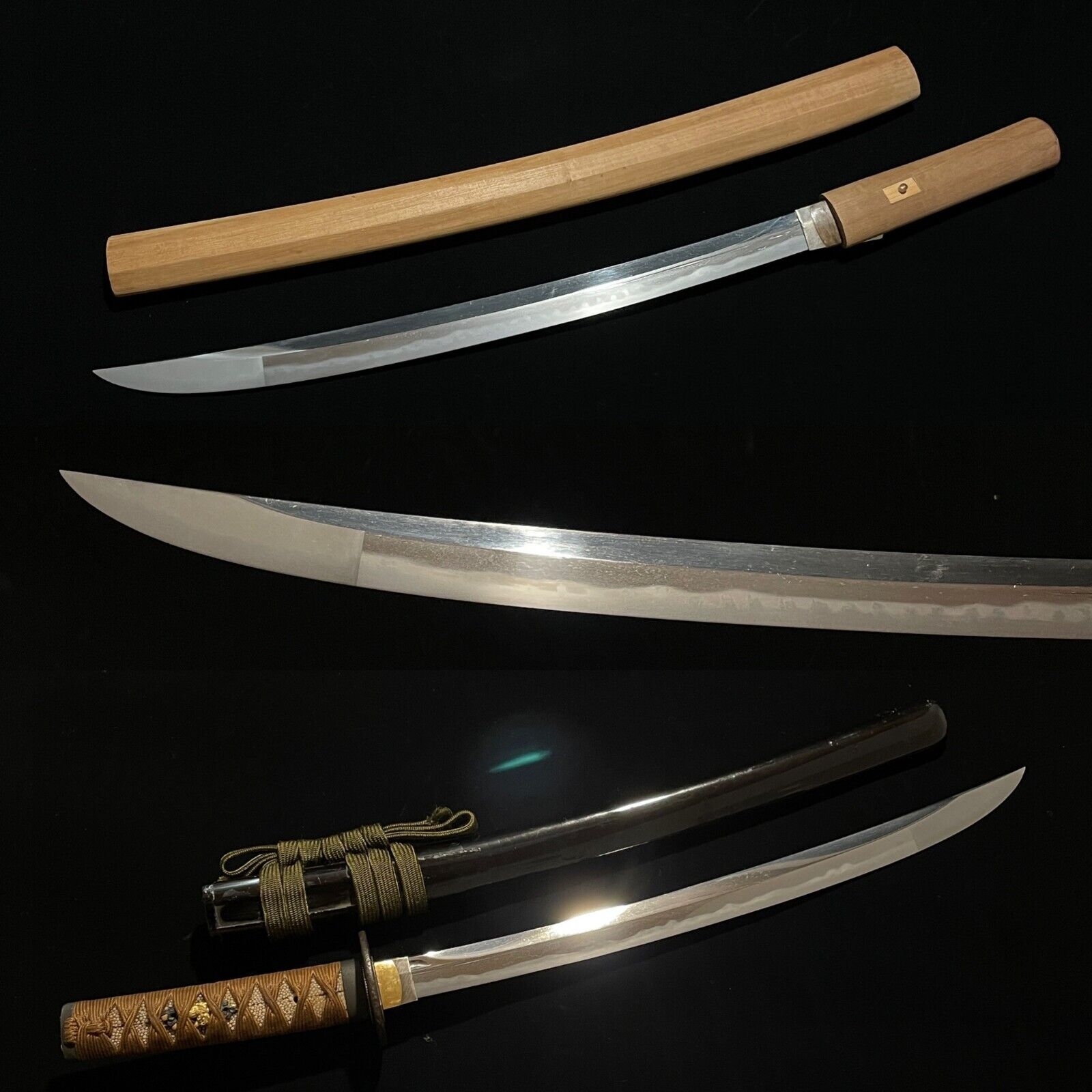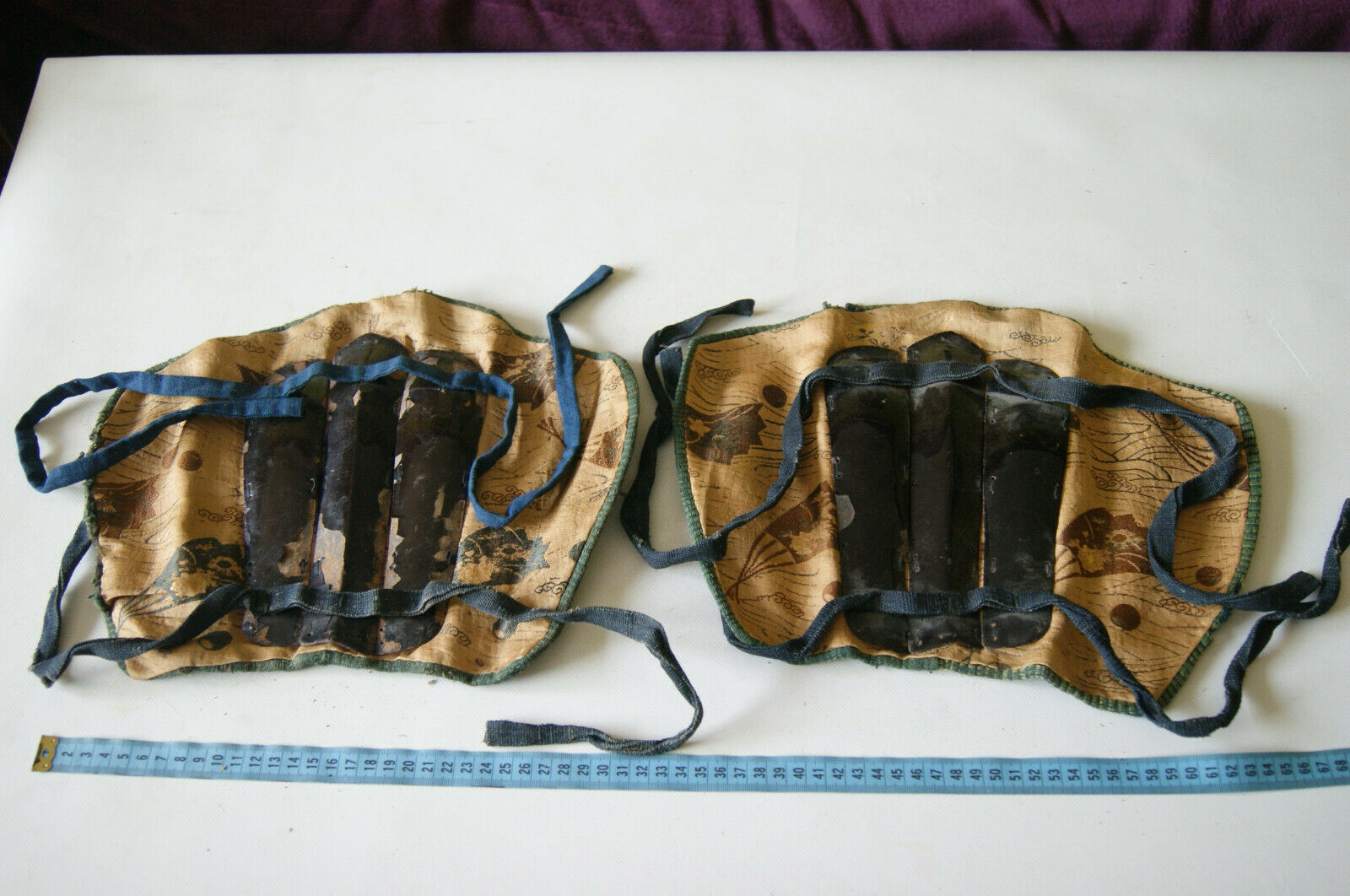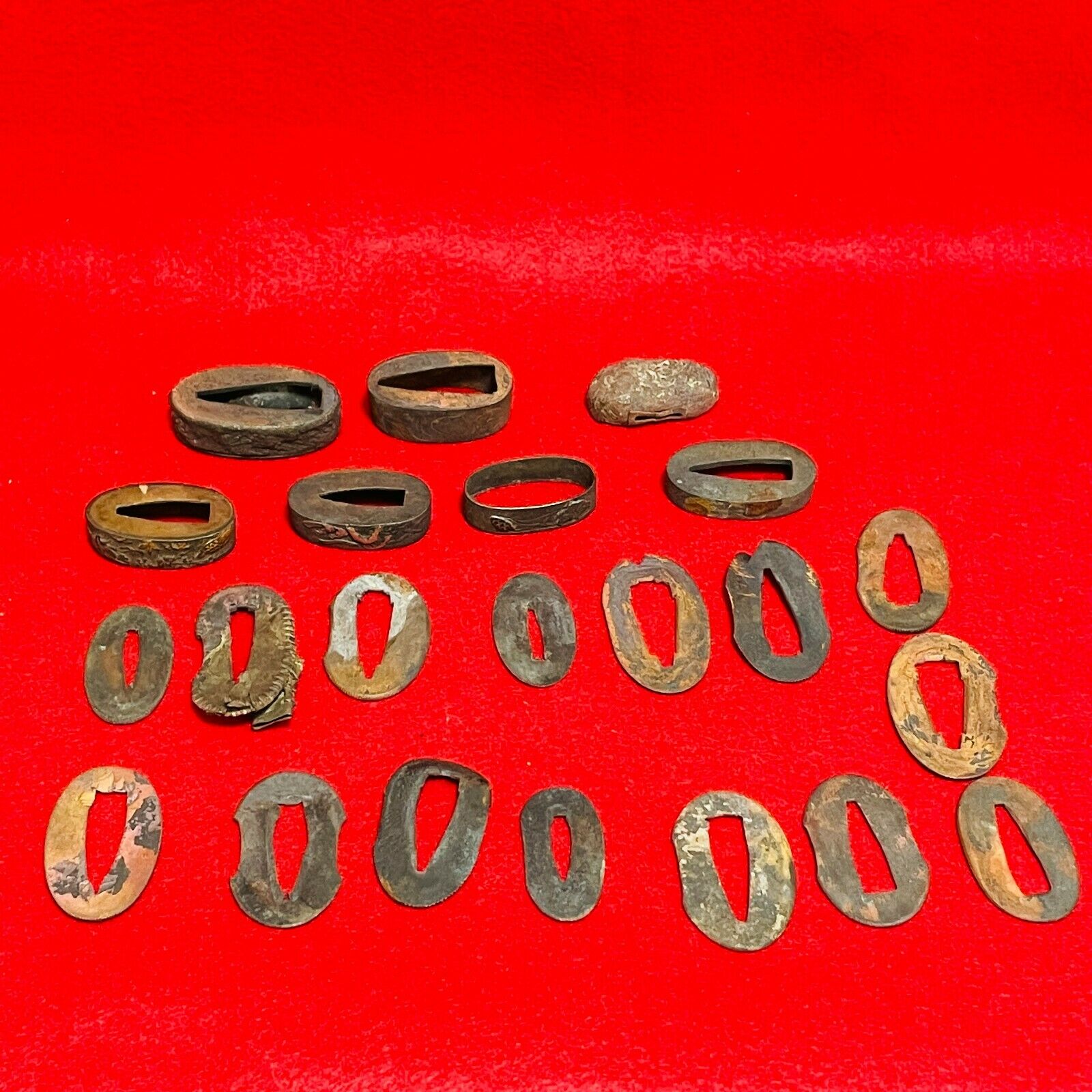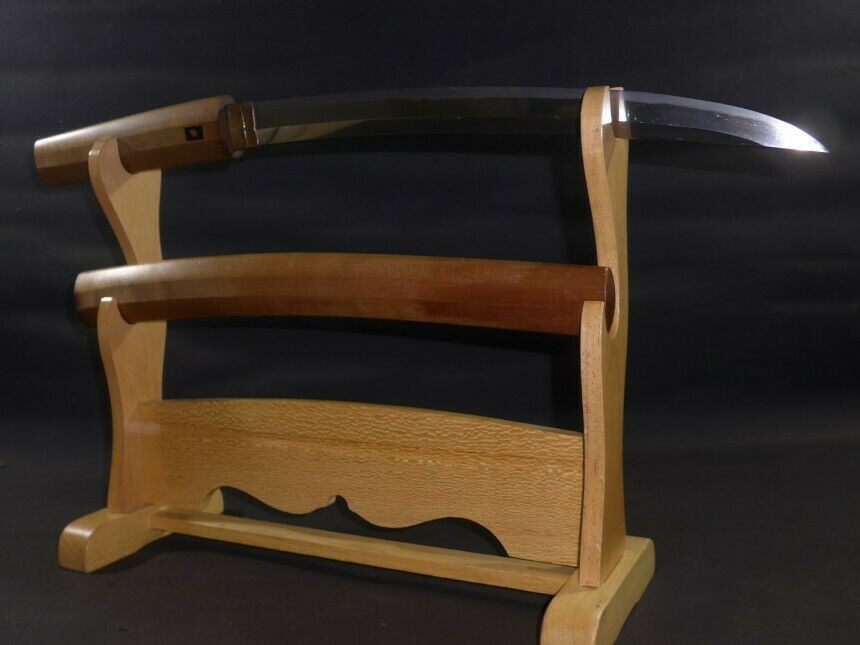-40%
Antique Japanese Samurai Katana Sword (Blade Circa 1550, Mountings from Edo Era)
$ 3168
- Description
- Size Guide
Description
Antique Japanese Samurai Katana Sword (Blade Circa 1550, Mountings from Edo Era)
.
All below information was directly derived from the original seller, whom is an expert in Asian antiquities. I can likely obtain a certification from said person, if so desired.
Will come with stand
.
NOTE
: Shipping will be handled by professional services.
Coordinate with seller upon purchase
.
Type and Style
:
Katana in buke-zukuri
(samurai style)
mountings of later Edo, 1780-1850
.
The wrapping is done in reverse of the usual style, including the menuki position. A possible reason for this would be if the sword had been modified during WW II for use by an Army officer.
If so, the hilt would have been re-wrapped like this, and the sheath would have been fitted with a leather combat cover and a suspension ring. Areas of wear around the kurikata knob may indicate this was the case.
Signature
:
The tang has been cut short, and then re-shaped at the end – at least a couple of centuries ago, so the name of the maker is missing.
Only three kanji remain: Bi – shu (Bizen province) and Osa- (Osafune, the most famous sword making townin Bizen).
From what I can see, the blade was likely made before 1550
. The workmanship of the steel looks good, although the surface is scratched.
The habaki hasnice katakiri style engraving of a pine tree, symbol of long life.
The tsuba is Mito School, made in the district ruled by the Mito branch of the Tokugawa family, later Edo era (1750-1820).
Mokko shape, made of hand-worked and engraved iron, with a pattern of stylized mist. The flowers are inlaid using gilt copper and silver. The design is nice but it has condition issues.
The multiple tang holes and the squared-off end of the “blood groove” strengthen my feelings about a pre-1550 date for the blade
, and the fuchi looks at least that old as well, although I think it was mounted to the blade in more recent times.
